Afro-Caribbean fashion is no longer confined to the islands; it has transcended borders, captivating designers, celebrities, and style enthusiasts across the borders.
Rooted in African heritage and enriched by the Caribbean’s diverse cultures, this fashion movement is bold, expressive, and deeply symbolic. Afro-Caribbean fashion is making a global statement from the vibrant streets of Kingston, Port of Spain, and Bridgetown to international runways and red carpets.
This rise can be attributed to multiple factors, including the influence of reggae, dancehall, soca, and Afrobeats, the increasing representation of Black designers, and the power of social media in celebrating cultural aesthetics.
Caribbean-born stars like Rihanna, Grace Jones, Shenseea, and Popcaan have brought their homegrown styles to global audiences. At the same time, designers of Caribbean descent have gained recognition for their ability to merge tradition with contemporary fashion.
Ahead, we explore the Afro-Caribbean fashion trends that are currently shaping global style, highlighting their cultural significance and widespread appeal.
Madras Fabric — Afro-Caribbean Fashion
Madras fabric is one of the most distinctive Afro-Caribbean fashion trends, deeply rooted in the heritage of islands such as Trinidad and Tobago, St. Lucia, Dominica, and Jamaica. This brightly colored plaid textile originated from India and was embraced in the Caribbean, where it became a symbol of national pride and cultural identity.
Traditionally, Madras was used for skirts, headwraps, and ceremonial attire, but in recent years, it has been reimagined in modern fashion.
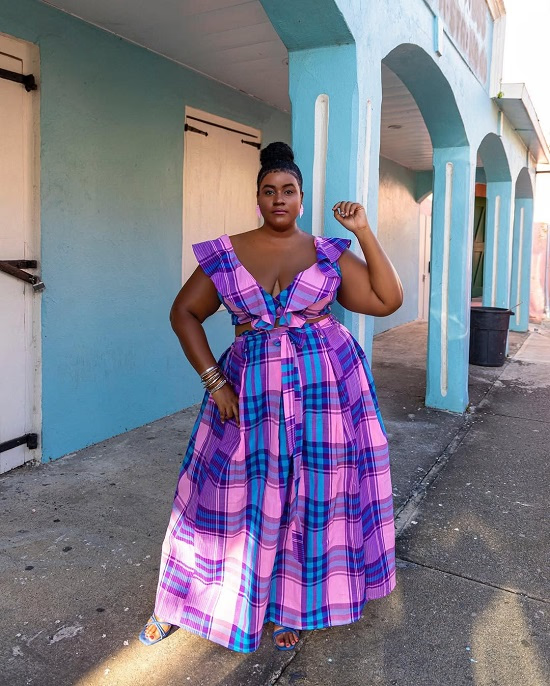 Photo: Instagram/Chanala_vi
Photo: Instagram/Chanala_vi Designers are incorporating Madras into tailored blazers, maxi dresses, jumpsuits, and even swimwear, blending traditional craftsmanship with contemporary silhouettes. This revival of Madras fabric in Afro-Caribbean fashion trends has also reached global fashion weeks, where high-end designers experiment with its bold patterns and vibrant hues.
As the demand for culturally significant fashion increases, Madras continues to stand out as a defining feature of Afro-Caribbean fashion trends, reinforcing the region’s rich history while making a modern style statement.
Rastafarian-Inspired Streetwear — Afro-Caribbean Fashion
Rastafarian culture has had a profound influence on Afro-Caribbean fashion trends, with its signature red, gold, green, and black color scheme becoming a recognizable symbol of unity, resistance, and African pride. These colors are widely used in tracksuits, hoodies, T-shirts, beanies, and accessories, making them an essential part of the global streetwear scene.
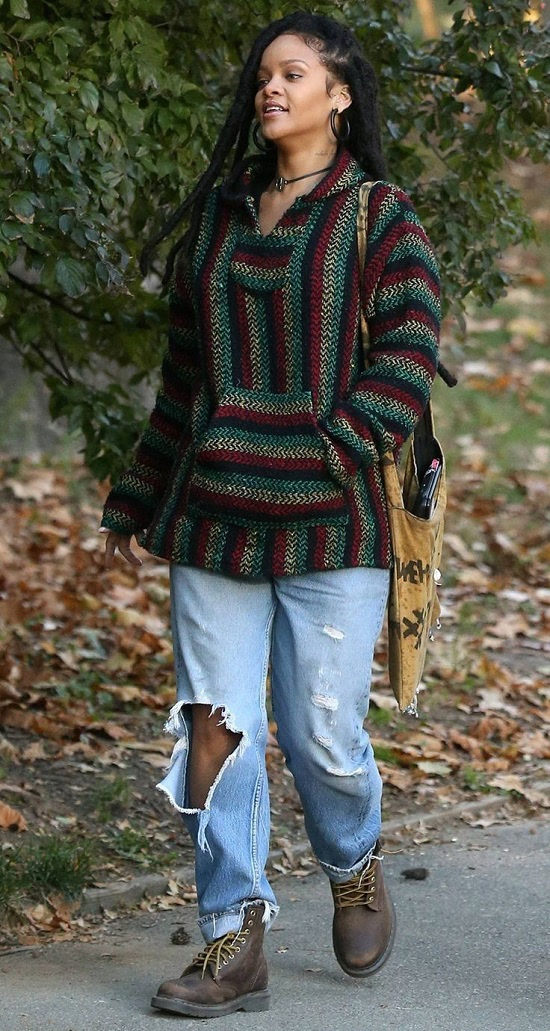 Photo: Instagram/ Badgyalriri
Photo: Instagram/ Badgyalriri Aside from color, Rastafarian streetwear emphasizes comfort and self-expression, featuring oversized garments, linen tunics, knitted hats (tams), and beaded jewelry. The movement’s commitment to natural living is reflected in the use of organic cotton, hemp fabric, and handcrafted accessories, elements that have sustainably gained traction.
With reggae and dancehall music spreading worldwide, Rastafarian-inspired clothing has secured its place in the global fashion trends.
Mesh Marina Vests — Afro-Caribbean Fashion
The Jamaican mesh marina vest is one of the most iconic Afro-Caribbean fashion trends, transitioning from a simple everyday garment to a bold fashion statement embraced everywhere around the world.
Originally worn as an undershirt due to the Caribbean’s hot climate, the mesh marina gained cultural significance through dancehall and reggae movements, where it became associated with masculinity, confidence, and rebellion.
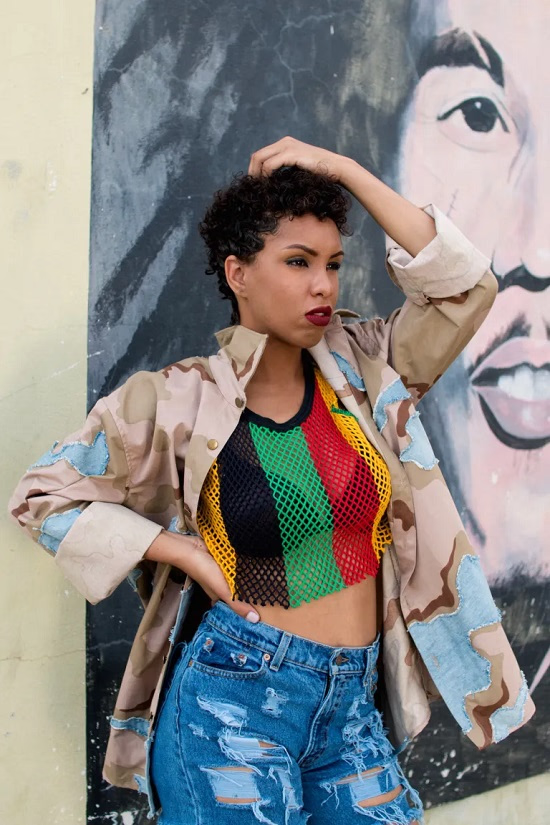 Photo: Getty Images
Photo: Getty Images Today, the mesh marina vest is a must-have item in Afro-Caribbean fashion trends, appearing in both casual and high-fashion looks. Dancehall artists, streetwear influencers, and fashion designers have given this traditional piece a modern update, pairing it with cargo pants, ripped jeans, oversized blazers, and gold accessories.
The revival of 90s and Y2K fashion trends has further propelled the popularity of the mesh marina vest, with designers experimenting with different colors, embroidered patterns, and custom cuts to make it a versatile statement piece.
Afro-Caribbean Dancehall Fashion
Dancehall music and culture have played a pivotal role in shaping Afro-Caribbean fashion trends, known for their bold colors, tight-fitting silhouettes, and flashy accessories. This fashion movement is all about confidence, sensuality, and self-expression, blending streetwear elements with over-the-top glamour.
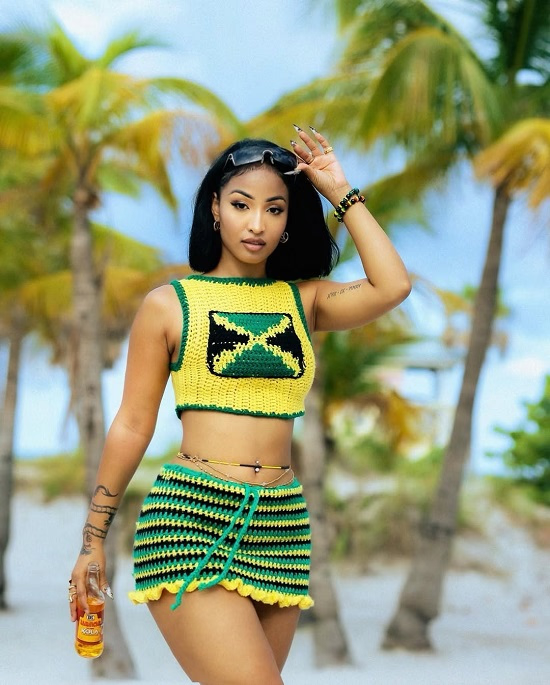 Photo: Instagram/ Shenseea
Photo: Instagram/ Shenseea Women’s dancehall fashion is dominated by bodysuits, sheer dresses, neon-colored two-piece sets, cut-out jumpsuits, and thigh-high boots, often adorned with sequins, rhinestones, and animal prints. Men’s styles feature designer tracksuits, distressed denim, oversized T-shirts, and statement sneakers, creating a high-energy aesthetic that matches the music and dance culture.
Afro-Caribbean fashion trends influenced by dancehall have extended beyond the Caribbean, with celebrities like Cardi B, Megan Thee Stallion, and Nicki Minaj embracing the style.
Luxury fashion houses have also incorporated elements of dancehall aesthetics into their designs, proving that this unapologetic, high-energy fashion movement is making waves worldwide.
Afro-Caribbean Carnival Costumes
Carnival is one of the most significant cultural celebrations in the Caribbean, and its elaborate, feathered, and bejeweled costumes have become one of the most spectacular Afro-Caribbean fashion trends.
These costumes, worn during festivals in Trinidad and Tobago, Barbados, St. Lucia, and Jamaica, represent freedom, resilience, and cultural heritage.
Carnival fashion has evolved from traditional masquerade attire to extravagant, high-fashion pieces that incorporate beaded bras, sequin bodysuits, high-slit skirts, and elaborate headdresses.
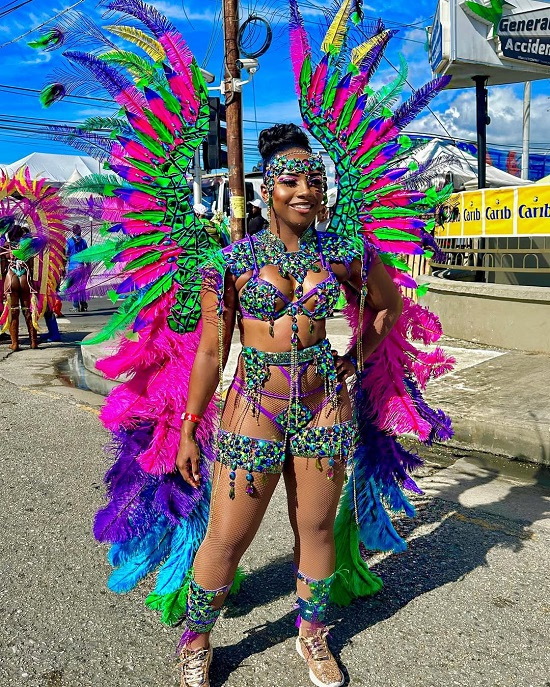 Photo: Instagram/Tasjae
Photo: Instagram/Tasjae While these costumes were once only worn during Caribbean Carnival celebrations, they are now influencing global music festivals, fashion editorials, and avant-garde runway collections.
The impact of carnival-inspired designs can be seen in brands that incorporate feathered details, bold embellishments, and metallic fabrics, proving that Afro-Caribbean fashion trends are setting new standards for high-energy, celebratory style.
Afro-Caribbean Jewelry
No Afro-Caribbean fashion trend is complete without signature accessories, which add a deeper cultural significance to outfits. Jewelry is a crucial aspect of Afro-Caribbean fashion trends, with influences drawn from African ancestry, spiritual traditions, and indigenous craftsmanship.
Cowrie shells, which were once used as currency in Africa and the Caribbean, are now a dominant trend in jewelry, appearing in chokers, anklets, bracelets, and earrings.
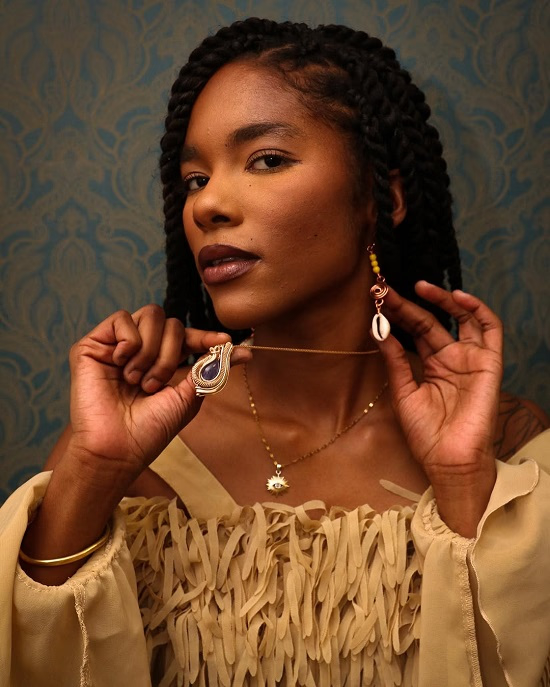 Photo: Instagram/ Earthangelheals
Photo: Instagram/ Earthangelheals Beaded necklaces and waist beads, traditionally worn for protection, beauty, and status, have also become must-have accessories, blending historical meaning with modern fashion appeal.
Chunky gold hoop earrings, layered chain necklaces, and oversized rings are also major staples in Afro-Caribbean fashion trends, popularized by icons like Rihanna, Grace Jones, and Lauryn Hill. These accessories, often paired with headwraps, turbans, or loc jewelry, help complete the bold and expressive aesthetics of Afro-Caribbean fashion trends.
Headwraps — Afro-Caribbean Fashion
The headwrap is one of the most enduring Afro-Caribbean fashion trends, symbolizing cultural heritage, pride, and versatility. Worn by women across the Caribbean for generations, headwraps are deeply rooted in African traditions, where they serve both practical and symbolic purposes.
Historically, headwraps were used to protect hair from the sun and elements, while also acting as a means of self-expression, denoting social status, marital status, or even resistance against colonial oppression.
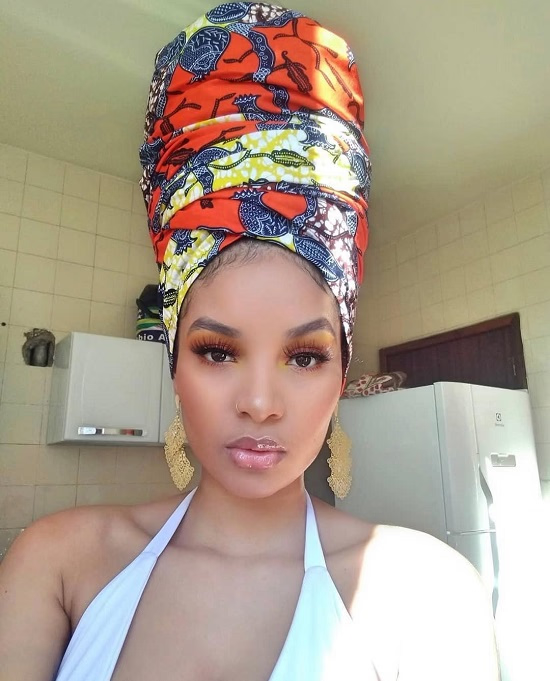 Photo: Instagram/ Turbanistaparis
Photo: Instagram/ Turbanistaparis In modern Afro-Caribbean fashion, headwraps remain a powerful style statement. Whether crafted from bold Madras fabric, Ankara prints, or soft cotton blends, these wraps add a regal touch to any outfit. Celebrities like Erykah Badu and other influencers continue to showcase the beauty of headwraps on red carpets, music videos, and social media, inspiring more people to embrace this timeless accessory.
Today, headwraps are styled in various ways—from towering, sculptural wraps to simpler, everyday styles perfect for casual wear. More than just an accessory, the headwrap is a symbol of empowerment, self-expression, and cultural pride, reinforcing its status as a must-have in the global fashion scene.
Photo: Instagram/Tange.studios






